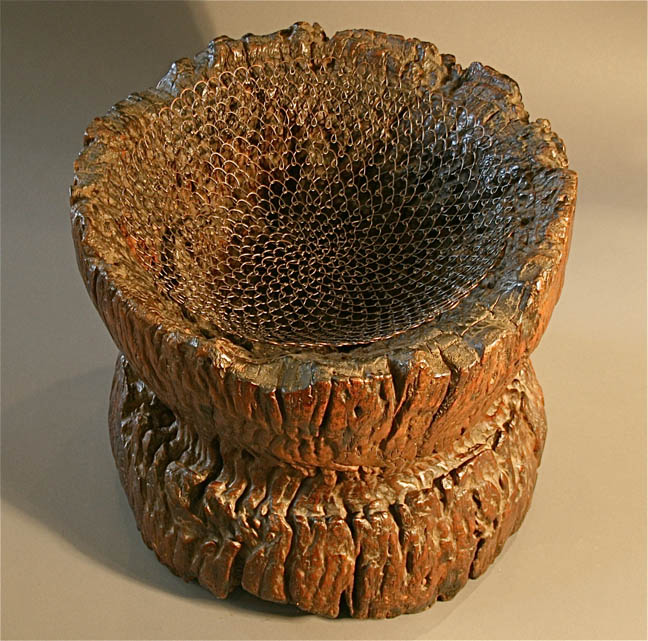

Title: Antique Wooden Old Growth Hardwood Farm Crushing Tool Mortar
Shipping: $29.00
Artist: N/A
Period: 19th Century
History: N/A
Origin: South America > Brazil
Condition: Excellent
Item Date: 1800 to 1900
Item ID: 1868
This was a primitive farm tool. A very large and heavy antique wooden mortar, once used for crushing herbs, I have repurposed it, as an art designer display bowl, for anything one would want to put into it. I put a handmade wired bowl on top of it; it looks and works great. It has a few surface cracks from long ago. This merely adds great character! 18" inches high 19" inches around . The wood is a beautiful DARK brown color, darker than the camera will show, made from old-growth hardwood. *All of the art is edited and chosen by us for its high quality and workmanship before posting. These collectibles have been selected with the artist & collector in mind. We are committed to enhancing our customer’s lives by discovering creating, and pointing out only the best art we can find in the world today. We Are Taste-Makers, Art Advisers, Consultants & Publishers Of Spectacular Art Stories. Our job is to be intermediaries between buyers and sellers. We are vetting for high end art patrons. We are determined to catalog the world's most exceptional art and share it with everyone.
Link: http://en.wikipedia.org/wiki/Pestle
A mortar and pestle is a tool used to crush, grind, and mix substances. The pestle is a heavy stick whose end is used for pounding and grinding, and the mortar is a bowl. The substance is ground between the pestle and the mortar. The English "mortar" derives from classical Latin "mortarium", meaning, among several other usages, "receptacle for pounding" and "product of grinding or pounding". The classical Latin "pestillum" led to the English "pestle", meaning "pounder". The Roman poet Juvenal applied both "mortarium" and "pistillum" to articles used in the preparation of drugs, reflecting the early use of the mortar & pestle as a pharmacist's or apothecary's symbol. The antiquity of these tools is well documented in some early literature.